VC2E2LA04
understand how texts are made cohesive by using personal and possessive pronouns and by omitting words that can be inferred
- identifying language used to build information across a text, for example by connecting similar and dissimilar things
- mapping examples of word associations in texts, for example words that refer to the main character in a story, such as ‘Isy’, ‘she’, ‘I’, ‘sister’, ‘student’
- tracking how a person or thing is identified through a section of a text, for example ‘eggs’, ‘they’, ‘them’
- identifying words left out that can be inferred from the surrounding text; for example, in ‘Xanthe went to school. She had a lovely day’, ‘at school’ is inferred
- using personal and possessive pronouns to link entities previously mentioned in the text
- Plus Plan
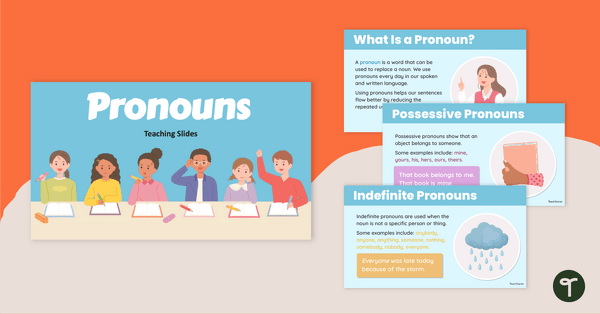
Pronouns Teaching Slides
Use this pronouns PowerPoint presentation to teach your students about some of the most common types of pronouns.
- Plus Plan
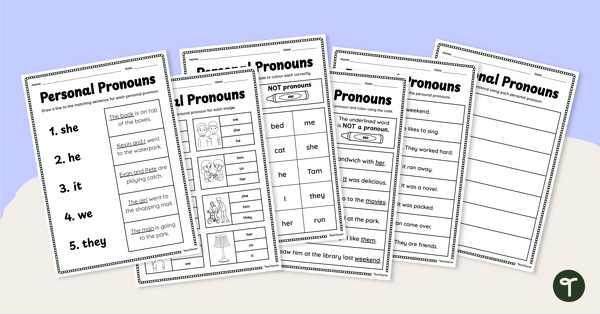
Personal Pronouns Worksheet Pack
Use these personal pronouns worksheets to get your students identifying and using these essential parts of speech.
- Plus Plan
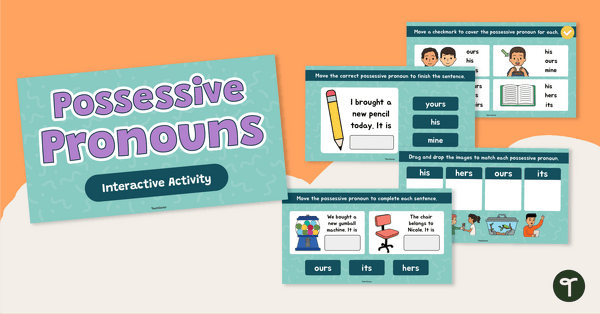
Possessive Pronouns Interactive Activity
Use these digital possessive pronouns exercises in your grammar lessons to give your students practice in using these essential parts of speech.
- Plus Plan
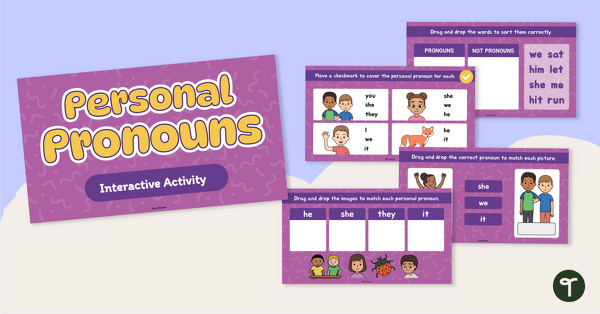
Personal Pronouns Interactive Activity
Use these digital personal pronouns exercises in your grammar lessons to give your students practice in using these essential parts of speech.
- Plus Plan
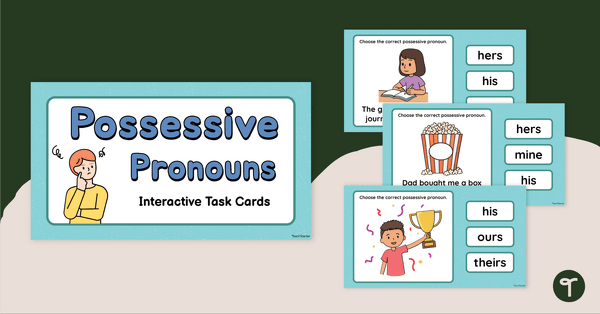
Possessive Pronouns Interactive Task Cards
Use this online possessive pronouns game to get your students identifying and using these important parts of speech.
- Plus Plan
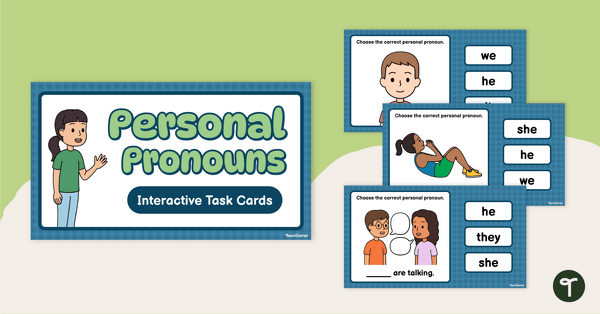
Personal Pronouns Interactive Task Cards
Use this online personal pronouns game to get your students identifying and using these important parts of speech.
- Plus Plan
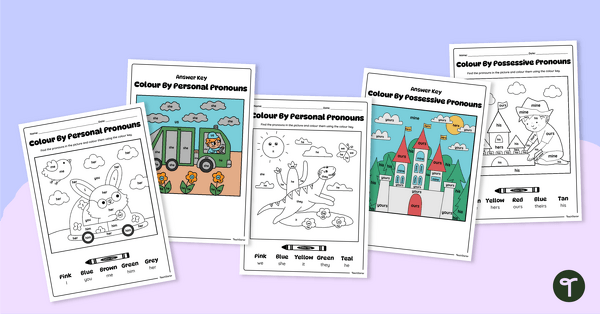
Colour by Pronouns Worksheet Pack
Use this set of colour-by-pronouns worksheets to help your students learn these important parts of speech.
- Plus Plan
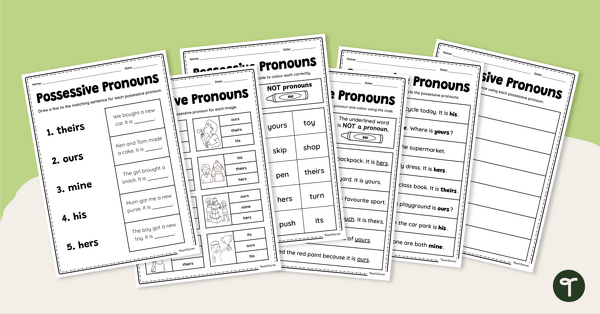
Possessive Pronouns Worksheet Pack
Use this possessive pronouns worksheet pack to get your students identifying and using these essential parts of speech.
- Plus Plan

Pronoun Task Cards
Get your students to practise using pronouns with this set of task cards perfect for literacy groups.
- Plus Plan
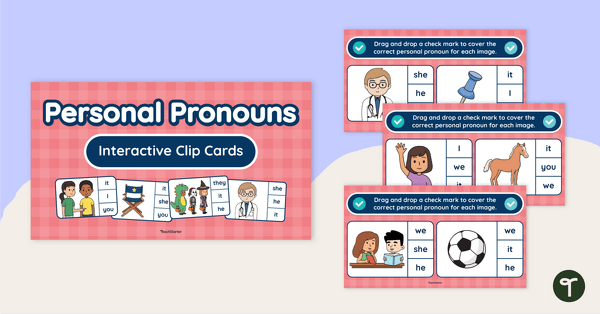
Personal Pronouns Interactive Peg Cards
Do some pronouns practice with your students using this set of 24 digital peg cards.
- Plus Plan
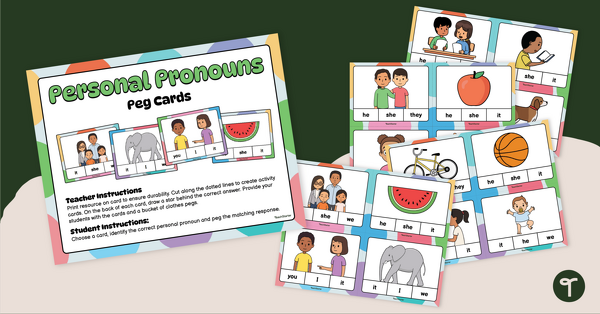
Personal Pronouns Peg Cards
Use these personal pronouns peg cards in your early years classroom when teaching students about parts of speech.
- Plus Plan
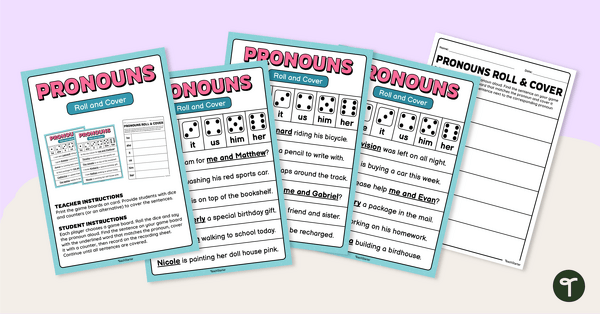
Personal Pronouns Roll and Cover Game
Use this pronouns game as a fun and collaborative way of learning about personal pronouns.
- Plus Plan
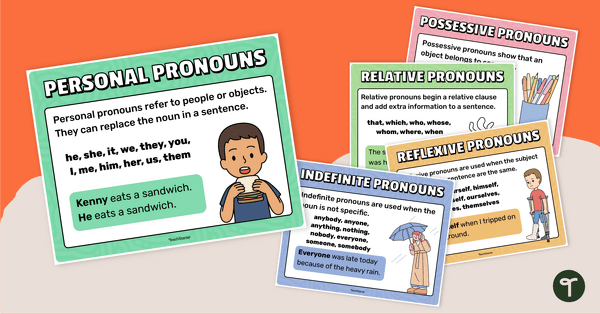
Pronouns Poster Pack
Display this set of 7 pronouns posters in your classroom to remind your students of the most common types of pronouns and their uses.
- Plus Plan
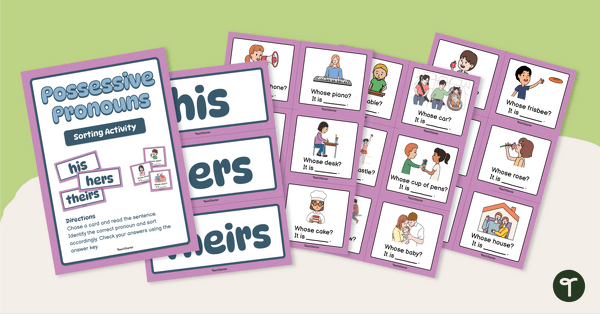
Possessive Pronouns Sorting Activity
Use this sorting activity in your grammar lessons to teach your students about possessive pronouns.
- Plus Plan
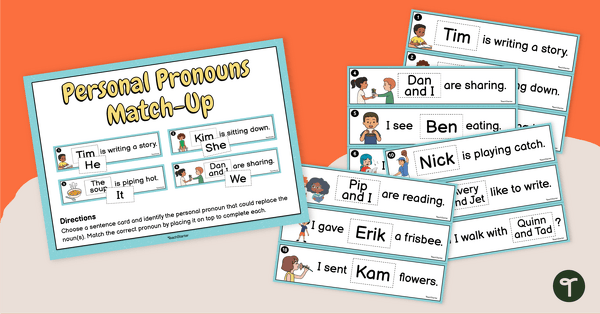
Personal Pronouns Matching Game
Familiarise your students with some of the most common personal pronouns using this fun matching game perfect for group work.
- Plus Plan
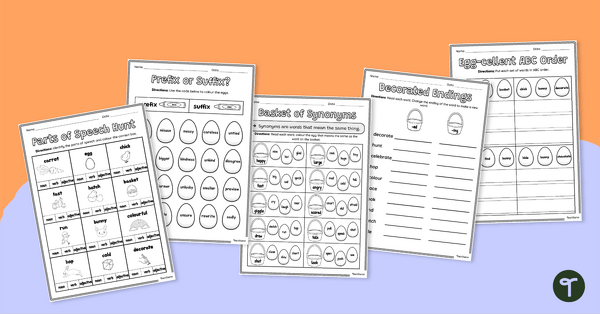
Easter Worksheets - Grammar Practise
Practise skills learnt in literacy with this Easter-themed grammar activity pack.
- Plus Plan
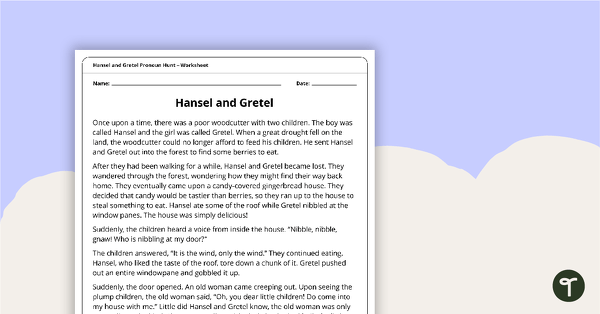
Pronoun Worksheet – Hansel and Gretel
Use this pronoun worksheet to get students identifying pronouns in the context of a well-known fairy tale.
- Plus Plan
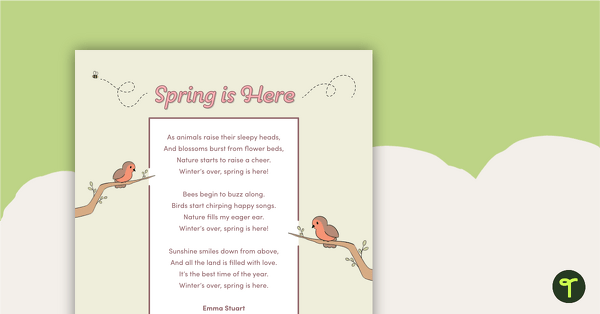
Spring Is Here Poem – Worksheet
A comprehension worksheet for a poem about the season spring.
- Plus Plan
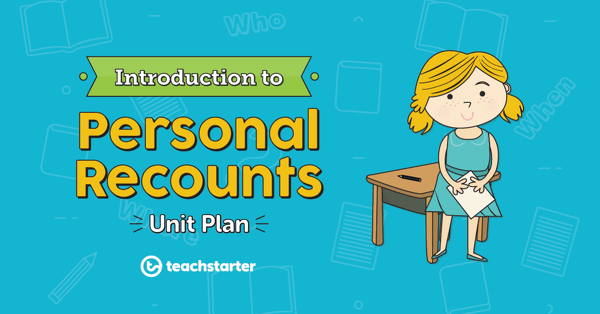
Personal Recounts - Language Features
A 60 minute lesson in which students will identify and explore the language features of personal recounts.